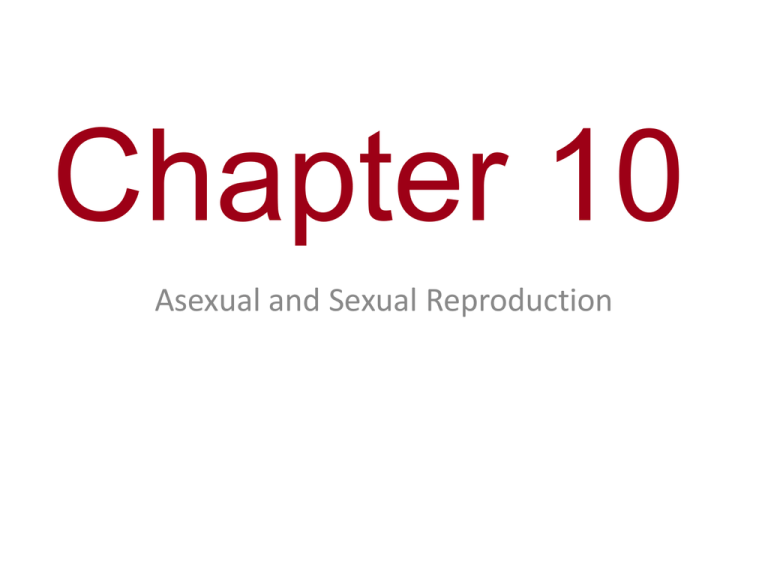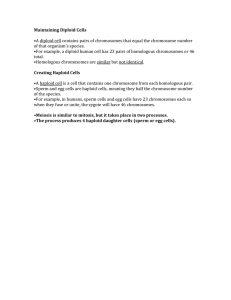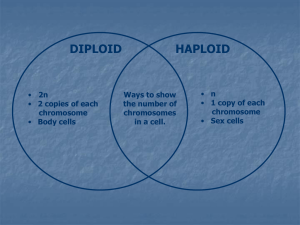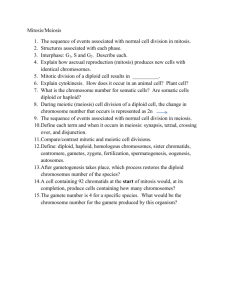sexual reproduction
advertisement

Chapter 10 Asexual and Sexual Reproduction You Must Know • The difference between asexual and sexual reproduction. • The role of meiosis and fertilization in sexually reproducing organisms. • The importance of homologous chromosomes to meiosis. (There will be more on this tomorrow.) Genes are the units of heredity and are made up of segments of DNA. Each gene has a specific position, or locus, on a certain chromosome. Unreplicated Chromosome Replicated Chromosome Asexual reproduction in two multicellular organisms 0.5 mm Parent Bud (a) Hydra (b) Redwoods • In sexual reproduction, two parents give rise to offspring that have unique combinations of genes inherited from the two parents Figure 10.3b Pair of homologous duplicated chromosomes Karyotype Sister chromatids Chromosomes in a homologous pair are the same length and shape and carry genes controlling the same inherited characters. • The sex chromosomes, which determine the sex of the individual, are called X and Y. • Human females have a homologous pair of X chromosomes (XX). • Human males have one X and one Y chromosome. • The remaining 22 pairs of chromosomes are called autosome Autosomes Sex Chromosomes Somatic cells (nonreproductive cells) have two sets of chromosomes. They are diploid. (2n 46) Gametes (reproductive cells: sperm and eggs) have one set of chromosomes. They are haploid. (n 23) Figure 10.4 Key 2n 6 Maternal set of chromosomes (n 3) Paternal set of chromosomes (n 3) Sister chromatids of one duplicated chromosome Two nonsister chromatids in a homologous pair Centromere Pair of homologous chromosomes (one from each set) • In an unfertilized egg (ovum), the sex chromosome is X. • In a sperm cell, the sex chromosome may be either X or Y. X X Y X XX XY Girl Boy Haploid n=23 Diploid 2n=46 The zygote produces somatic cells by mitosis as it develops into an adult Figure 10.5 Haploid gametes (n 23) Key Haploid (n) Diploid (2n) Egg (n) Sperm (n) MEIOSIS Ovary FERTILIZATION Testis Diploid zygote (2n 46) Mitosis and development Multicellular diploid adults (2n 46) • Depending on the type of life cycle, either haploid or diploid cells can divide by mitosis. • However, only diploid cells can undergo meiosis. • The halving and doubling of chromosomes contribute to genetic variation in offspring.






